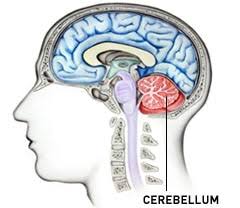In my attempt to understand the mind beyond metaphors, I began exploring other alternatives in addition to science. One path led me into meditation and the spiritual realm. At some point in the 20 years of this exploration, the boundary between science and spirituality gave way. What became obvious at that point was that the thing I was searching for and trying to understand (mind, consciousness, God, Buddha-nature, enlightenment) was in fact the world I inhabited. I recognized my true nature in the life around me. And this new world stared at me as it had always been staring me in the face. This realization, as anyone who experiences it will tell you, is both funny (Is this a joke?) and infinitely “enlightening.” Funny because it seems so obvious in retrospect. Infinitely enlightening because it is but the beginning of our real journey of discovery.
The most immediate change I experienced was a lessening in my need to achieve in terms of my career and professional goals. The self-evident purpose of my life wasn’t to achieve anything per se but to enjoy my beingness. Having studied to be a scientist, I had convinced myself that achievement drove my work. Accolades, grants, publications, and other aspects of research appeared to define the importance of who and what I was. Now, that discernment was reversed. I saw scientific knowledge for the sake of knowledge and as having its own unique beauty without the need to make anything out of it. Everything else became secondary.
Along with this experience, I sensed a developing confidence. I knew this realization was not a temporary state or another creation of the mind that would be soon forgotten. It was a real awakening to and appreciation of life. I developed a sensitivity to the “sacredness” of all things. Sacredness in the sense of appreciating the beauty and uniqueness of everything, while appreciating their role in the larger unity of which I was part. Since that recognition, quiet moments and meditation have become my engagement and appreciation of this new sensibility. These changes in perspective and awareness do not mean I am no longer interested in doing my job, attend baseball games, make friends, or make love. Rather, it’s the motivation for doing these things that’s changed. The doing to achieve a goal is no longer important, just the doing is enough. Thus, an intrinsic joy in being human and doing normal things came to the forefront and was very satisfying. The experience reflected a natural flow, without the anxiety I had felt previously.
I also sense a paradox in all of this. The desire to know the unknown motivated my paths in both science and spirituality. But the closer I got to understanding the true nature of being, the self-centered motivation to know and to do faded and disappeared. Replaced instead by an intense desire to let whatever exists unfold without interference. Further, I learned to be content without having to do anything to garner such contentment. Since childhood, I have had an inner drive giving me the energy to excel and outdo others. It has motivated my desire to learn and explore science, but also facilitated my dissatisfaction, anxieties, discontent and fears. In my old skin, I felt guilty at not being productive. Following my realization, that driving energy still exists, but the sense of movement or needing to move and to do does not. I am calm, yet still motivated to learn and explore, but do not experience the anxieties and fears that accompanied my earlier life. I am not guilty resting. Instead, I am energized by rest and relaxation, by not-doing. As I write this I recognize how “normal” this all sounds, which is the whole point. Recognizing who we truly are, both the small swirl in the stream of consciousness and the stream itself, is as normal as normal gets.


